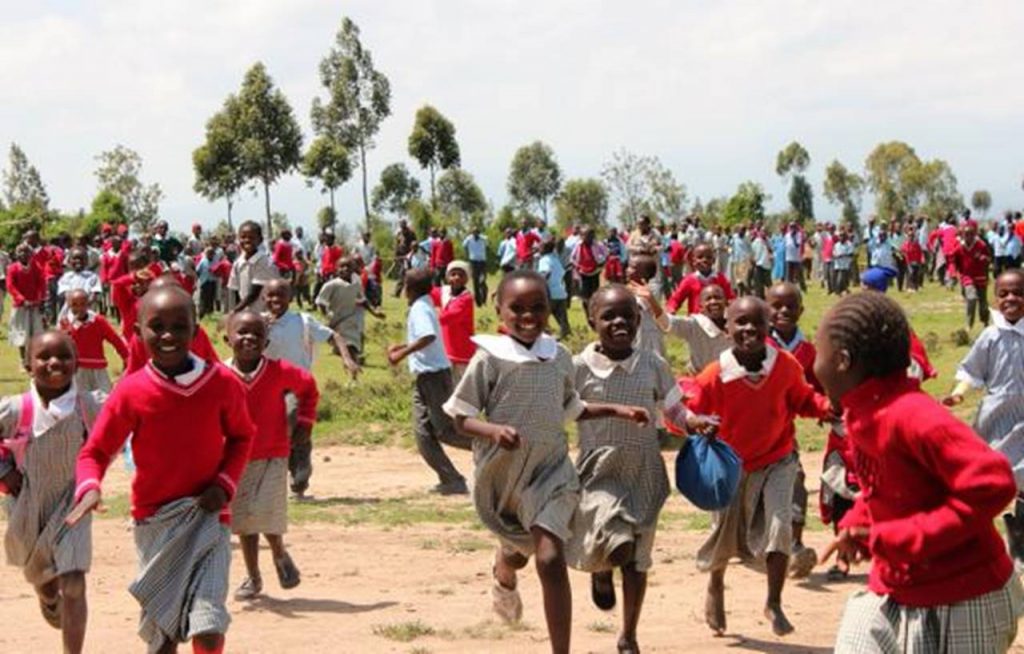
Recently, I returned to Nanyuki, Kenya to check on the progress of a unique project Microsoft launched with Mawingu Networks, Jamii Telecom Limited and the Kenyan Ministry of ICT to deliver low-cost, solar-powered Internet access and device charging to rural Kenya.
The project, launched two years ago, utilizes ‘white spaces’ – TV frequencies assigned to broadcasters but not used locally – that could be used to provide wireless, broadband access to the 80 percent of Kenyans who do not have access to the Internet.
The project is already reaping measurable benefits. Just ask Steven Mwaniki from the Gakawa Secondary School in Nanyuki, which is located on the equator in the foothills of Mt. Kenya. A few months after being connected to the Internet for the first time, Steven posted his first online comment in response to an article on Kenya’s Daily Nation website: “As one of the lucky student[s] of Gakawa secondary school [I] am so humbled by the kind of noble project that you guys have brought to our school. That is so kind of you. We promise to take great care of this precious project. We are so grateful of you and may our Might Lord bless you forever.”
Two weeks ago, I met with the school’s principal, Beatrice Ndorongo, who reported that thanks in part to access they now have to online content and to standardized test preparation materials, students there have improved their scores in every single subject in the Kenya National Exam. Because this test is used to determine entrance to universities in Kenya, an improvement of this magnitude means that more students and their families will face a brighter future.
Working together with local ISP partners, we now have a total of 14 such projects to bring wireless broadband access via TV white spaces to communities on five continents. And these projects are having an impact, bringing low-cost Internet access to 70 primary and secondary schools serving 36,000 students as well as five universities serving 58,000 students. Our partners have also used TV white space connectivity to bring lifesaving specialized medicine to women in Botswana and to rapidly deploy ad hoc networks in response to natural disasters, such as in the Philippines and most recently in Nepal.
These projects range from those covering large geographic areas – connecting schools and government offices in the Oshana District of Northern Namibia – to urban centers with high population density – providing broadband access, devices, cloud services, and training to university students in Dar es Salaam, Tanzania.
The diversity of this effort reflects a recognition that many more countries need to adopt TV white space regulations in order for a technology ecosystem to emerge. It also reflects a recognition that new technologies, business models and partnerships are needed to deliver affordable and robust Internet access to over 4 billion people around the world yet to be online. Although digital inclusion is a greater challenge in emerging markets, this problem faces all countries. As a company founded on the idea of democratizing access to technology, Microsoft is committed to working with public and private sector partners to address these challenges.
What we’ve learned from these projects is that TV white space technology can be used to bring affordable Internet access to people in places that would not otherwise be served by other wireless technologies. A TV white space base station – even manufactured at small volumes – is only one-tenth the cost of an LTE base station.
TV white space transmitters can operate at low power while providing multi-kilometer point-to-multipoint connectivity – meaning it can be powered purely with renewable energy like the sun or the wind. And these technologies can support both high-bandwidth and low-latency applications, such as HD video streaming and Skype video conferencing.
In the coming months, Microsoft and its partners plan to launch additional projects featuring TV white space technologies along with our devices and cloud service solutions. Some of these projects will feature partnerships with major mobile operators, investigating how TV white space technologies can complement existing technologies.
As a result, we hope to see many more lives impacted positively by this exciting new technology, like Steven Mwanikis and his fellow classmates at Gakawa Secondary School in Nanyuki.
